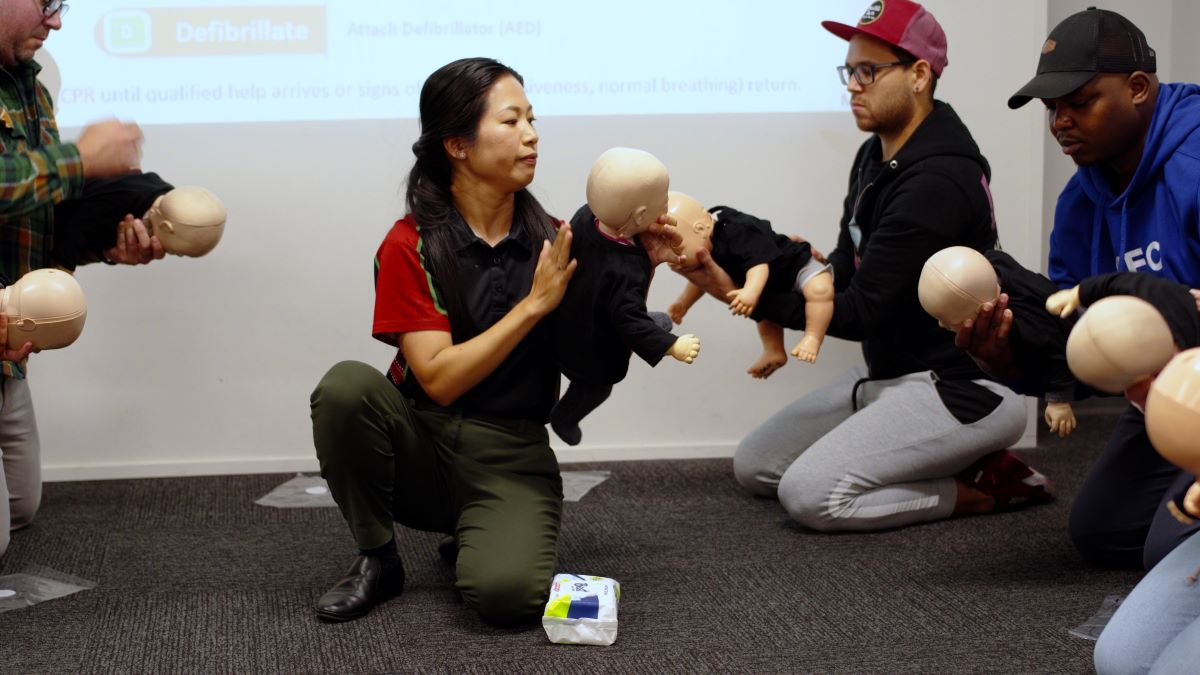Introduction
In minutes of crisis, understanding how to perform mouth-to-mouth resuscitation can suggest the difference in between life and fatality. Whether you go to home, at the workplace, or out in the neighborhood, knowing exactly how to provide help can empower you and those around you. This post is dedicated to assisting you find regional CPR classes that will equip you with the skills essential to save lives. From comprehending the basics of mouth-to-mouth resuscitation to advanced resuscitation strategies, we'll explore every little thing you require to know.
Find Regional mouth-to-mouth resuscitation Courses: Transform Yourself into a Lifesaver
Finding regional mouth-to-mouth resuscitation classes is less complicated than ever. With different organizations offering training sessions, both in-person and online, there's no reason not to be prepared. You could be wondering: Where do I start?
Why Learn CPR?
Learning mouth-to-mouth resuscitation isn't just about acquiring a skill; it's about preparing when it counts. In heart emergency situations, every 2nd matters.
- Quick Response: The sooner someone obtains mouth-to-mouth resuscitation, the greater their possibility of survival. Empowerment: Recognizing you can make a difference instills confidence. Community Impact: You contribute to producing more secure environments.
The Function of AEDs in CPR
Automated Exterior Defibrillators (AEDs) play an essential duty in resuscitation initiatives.
How They Work: AEDs examine heart rhythms and deliver shocks when needed. Accessibility: Many public spaces are now outfitted with AEDs for prompt use. Combining Strategies: Utilizing an AED in addition to mouth-to-mouth resuscitation can significantly increase survival rates.Understanding Incorrect Compression Depth
One common First Aid Training in Wagga Wagga - First Aid Pro mistake throughout mouth-to-mouth resuscitation is wrong compression depth.
- Adult vs. Child vs. Infant: The depth differs based upon age: Adults: At the very least 2 inches Children: Regarding 2 inches Infants: Concerning 1.5 inches Importance of Depth: Inadequate depth can cause inadequate circulation.
CPR Techniques for Different Situations
How to Do CPR
Here's a detailed overview on carrying out fundamental grown-up CPR:
Ensure the scene is safe. Check for responsiveness. Call for assistance or have somebody phone call emergency situation services. Begin chest compressions at a price of 100-120 per minute. After every 30 compressions, give 2 rescue breaths.Tips for Efficient Breast Compressions
- Keep your arms straight. Use your body weight for force. Compress difficult and fast.
Infant mouth-to-mouth resuscitation Technique
When it pertains to babies, techniques differ substantially:
Use two fingers for compressions. The deepness ought to be about 1.5 inches. Deliver rescue breaths by securing your mouth over their mouth and nose.Combination Training Options
CPR and Emergency treatment Combination Courses
Combining CPR training with emergency treatment programs improves your readiness for emergencies.
- Comprehensive Training: Understand different clinical emergency situations together with resuscitation techniques. Certification Benefits: Several organizations offer twin certification upon completion.
Age-Specific Guidelines
Age-Specific CPR Standards Australia
Different age groups need tailored strategies:

|Age Group|Compression Deepness|Proportion|
|-----------|------------------|-------|
|Adult|At the very least 2 inches|30:2|
|Child|Regarding 2 inches|30:2|
|Infant|Around 1.5 inches|30:2|

Special Situations in Resuscitation
CPR for Sinking Victims
Drowning sufferers have special needs:
Prioritize rescue breaths because of the nature of asphyxiation. Perform compressions if there's no heart beat after rescue breaths are administered.Sports-related Heart Arrest
Athletes may face sudden cardiac arrest during activities.
Immediate activity is important; initiate mouth-to-mouth resuscitation without delay. Utilize readily available AEDs immediately if accessible.Workplace Emergency situation Plans
Having work environment emergency situation strategies can save lives:
- Train staff members frequently on standard first aid and mouth-to-mouth resuscitation skills. Conduct drills that imitate real-life scenarios involving cardiac arrest or injuries needing immediate attention.
The Myths Bordering CPR
It's essential to debunk myths bordering this lifesaving method:
Myth # 1: "CPR Always Restarts Heart"
While lots of believe that breast compressions will always restart the heart, this isn't true-- it's meant to keep blood flow till professional assistance arrives.
FAQs
Q1: What is the credibility duration of a CPR certificate?
A1: Usually, the majority of qualifications need renewal every 2 years; nonetheless, this may differ by organization and locale.
Q2: Can I take on-line CPR certification?
A2: Yes! Numerous accredited companies supply on-line accreditation that includes video demos and quizzes.
Q3: Exist specific guidelines for health care providers?
A3: Absolutely! Doctor certifications frequently include sophisticated strategies constant with existing wellness standards.
Q4: How do I find local classes?
A4: Undergo companies like the Red Cross or local health and wellness divisions for routines near you!

Q5: What devices do I need for effective training?
A5: Fundamental training normally calls for mannequins for method; some training courses may additionally offer AED simulators.
Q6: Exist sources specifically customized for Australian audiences?
A6: Yes! Different Australian health bodies supply local guidelines and training alternatives customized to local needs.
Conclusion
Transforming on your own into a lifesaver starts with looking for local courses where you can discover vital skills like mouth-to-mouth resuscitation and emergency treatment strategies tailored particularly for different situations-- whether resolving sports-related cardiac arrest or making use of AEDs successfully together with traditional methods like breast compressions and rescue breaths.
By taking part in these courses, not just do you outfit on your own with expertise that might possibly save lives however additionally end up being a very useful resource First Aid Training Wagga Wagga - First Aid Pro within your community-- an individual who stands ready in times of situation! So why wait? Find regional CPR classes today and embrace the power of being prepared!
This comprehensive overview has covered numerous aspects related to discovering local mouth-to-mouth resuscitation courses while ensuring you're geared up with functional understanding that enhances your capacity as a lifesaver!